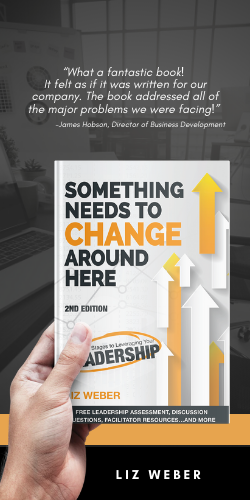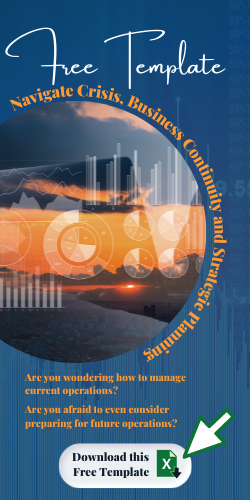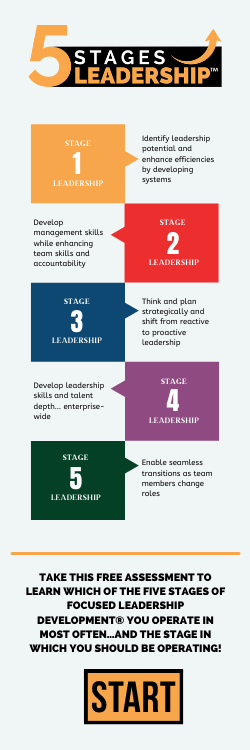Unlike the vision statement, which creates a clear picture of what we want to accomplish or become, the mission statement, clarifies what we do as an organization; why we exist; what purpose we serve. That’s its job. Webster’s Dictionary defines mission as “an assignment or task to be carried out.” The mission statement clarifies for everyone who works with us and those with whom we interact, just what business we’re in.
I become frustrated when someone says, “I don’t care what you call it: mission or vision; they mean the same thing.” No, they don’t. They have two different meanings; they serve two different purposes. When you don’t delineate between the two, you end up with confusing and ineffective vision or mission statements, and an incomplete plan.
 To develop a mission statement well, I tell my clients, “Aunt Clara needs to be able to understand this. Keep it simple.” Aunt Clara is that one relative we each have in our family. We may see her only once every few years at a family gathering. Yet, each time she sees us, she asks us the same question: “So, what does that company you work for do?” Even though you’ve told her several times, she doesn’t remember what you do, because she’s never really understood what you do.
To develop a mission statement well, I tell my clients, “Aunt Clara needs to be able to understand this. Keep it simple.” Aunt Clara is that one relative we each have in our family. We may see her only once every few years at a family gathering. Yet, each time she sees us, she asks us the same question: “So, what does that company you work for do?” Even though you’ve told her several times, she doesn’t remember what you do, because she’s never really understood what you do.
A well-developed mission statement is clear, simple and understood by anyone who hears it. It simply states why your organization exists; what purpose it serves, and what services or products it provides. It should be so clear but basic, Aunt Clara will finally understand.
Many organizations have mission statements that say things such as:
We are committed to delivering the highest-quality, state-of-the-art services and products that support our customers while servicing them with honesty, integrity, and professionalism.
That’s all well and good, but what do you do? Upon hearing this, Aunt Clara’s probably going to say, “Oh that’s nice dear” and then ask you in another year what you do for work. (However, if you actually shared a mission statement such as this one, poor Aunt Clara may just avoid you in the future.)
Now, here’s an example of a good mission statement:
The Board of Supervisors of Elections for Washington County’s overall mission is to assure that all eligible citizens are provided the opportunity to vote in local, state, and federal elections, and to monitor and verify the voting procedures in Washington County. ~ (Washington County, Maryland)
Isn’t that clear and easy to understand? It’s well-written and it very simply states why your organization exists and what purpose it serves. When she hears this, Aunt Clara will probably say, “Well you’ve got a very important job then don’t you?”
A mission statement this clear also helps everyone understand his or her core job responsibilities – regardless of individual position title. This is where the mission statement turns into a management tool. Now, not only is the mission statement a way to clarify why the organization exists, but it also allows you to utilize that great catch-all phrase in your position descriptions: “and any other duties as assigned.” What this means is: As long as an employee is accepting a paycheck from your organization, he or she is by default bound to support your organization’s mission. That’s each employee’s job. That’s the reason employees receive paychecks. So, if there’s a task that needs to be completed that supports your organization’s mission, but your employees say, “That’s not our job,” it’s time to remind them that as long as they accept paychecks from you, they are agreeing to fulfill their position description (which includes the catch-all phrase). This could mean an employee may need to help clean workstations before a big client meeting, or another employee may have to help a colleague complete a project. As long as the task you’ve asked them to undertake is supporting your mission, they are bound to help. If they choose not to help, that’s OK, they have just expressed their interest in working elsewhere as they are no longer interested in supporting your organization’s mission. The choice is theirs.
 That’s the power of a well-developed and well-written mission statement. It clarifies; it outlines your organization’s purpose and responsibilities; and it provides you with a great management tool. Organization’s should have an organization Mission Statement, as well as a Mission Statement for each department – as each department exists for its own purpose. Each department has a purpose. My rule for mission statements is: They can only be one sentence long – and it can’t be a run-on sentence! When the mission statement is concise and clear, it provides clarity to the team on purpose and scope of services or products.
That’s the power of a well-developed and well-written mission statement. It clarifies; it outlines your organization’s purpose and responsibilities; and it provides you with a great management tool. Organization’s should have an organization Mission Statement, as well as a Mission Statement for each department – as each department exists for its own purpose. Each department has a purpose. My rule for mission statements is: They can only be one sentence long – and it can’t be a run-on sentence! When the mission statement is concise and clear, it provides clarity to the team on purpose and scope of services or products.
Succinct organizational mission statements also serve as advertising bites. When placed on your website and company brochures, they become mini-advertising blurbs for prospective customers to determine what your organization does and if you can help them. Also, simple, clear mission statements help your employees spread the word about your organization. This is particularly important if your employees wear uniforms or company shirts imprinted with your company name and logo. When that happens, your employees are walking billboards for your company so you want to ensure that each “billboard” is sending the same message out into the marketplace when they tell others what your organization does. Why? If you asked 20 different employees what your organization does, how many different answers would you get? Ten, fifteen, twenty? Now, given the total number of employees you have, how many different messages do you anticipate are currently being sent out into the marketplace? A concise mission statement that all of your employees know and understand solves this problem.
One of my clients called me early one morning, the day after we had finalized his company’s mission statement. Right after that work session, my client had attended a dinner fundraiser at his church. During a break in the program, he turned to introduce himself to a lady sitting next to him. She immediately looked at his company shirt and asked what his company did. My client said to me, “Liz, as soon as she asked me that, your face flashed in my mind and I knew I’d better try out our new mission statement. So I did!” I congratulated him, but he said, “No wait. Here’s the real reason I called. I just received a $68,000 order from that lady. I’m now putting in an order for company shirts for all of my employees and I wanted to know if you wanted one too!” Not bad for just being able to clearly and concisely say what your organization does.
Key Points on Missions:
- A mission that clarifies is clear, simple, and understood by anyone who hears it. It should simply state your purpose for existing – what products or services you provide.
- It should be so clear but basic, Aunt Clara will finally “get it.”
- A mission that clarifies not only the organization’s mission, but also the missions of each department, also helps every employee understand the potential breadth of his or her core job responsibilities – regardless of position titles. The catch-all phrase “and any other duties as assigned” covers a lot of territory.
- A mission helps send a clear, consistent message to your market and prospective customers on what your organization does and how it could help them too.
Is your organization’s mission statement clear?
Copyright MMX – Liz Weber, CMC, CSP – Weber Business Services, LLC – www.WBSLLC.com +1.717.597.8890
Liz supports clients with strategic and succession planning, as well as leadership training and executive coaching. Learn more about me on LinkedIn!

























